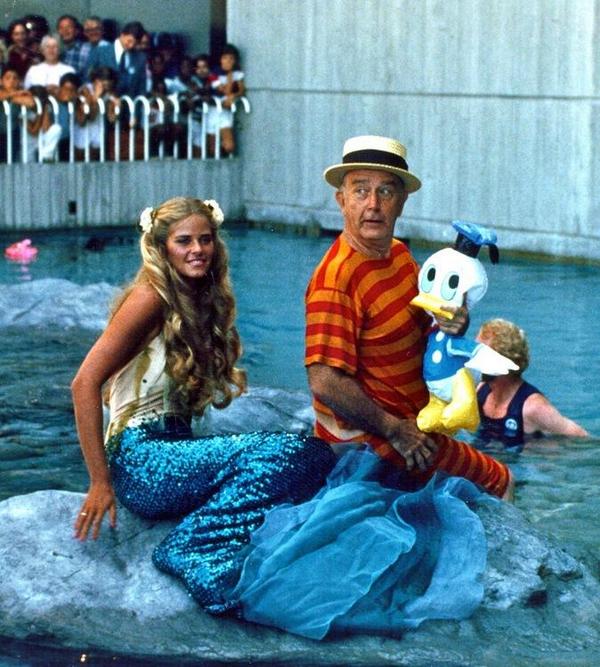“The mayor sputtered.
The crowd went wild”
-
The Baltimore Sun
The spectacular new OdySea Aquarium outside of Phoenix is
but one of the many new aquariums that have popped up around the nation in the
past few years. Many cities have opened
new aquariums (which, unlike zoos, tend to be compact, year-round attractions)
in order to revitalize downtown areas and serve as anchors for development and
tourism. This current renaissance mirrors a spree of
development that took place in the 1980s and early 1990s. Among the cities that opened new aquariums at
that time was Baltimore.
Following some less-than-flattering comments from the
President, Baltimore – its charms and its warts – was in the news a great deal
last year. The city has had its ups and
downs before, and in the late 1970s, it was decidedly a “down.” In a bold plan to revitalize Charm City,
Mayor William Donald Schaefer spearheaded a campaign to restore Baltimore’s
iconic Inner Harbor. What had once
brought the city wealth and success through trade, Schaefer now envisioned as a
bustling hub of dining, shopping, and entertainment. As a crown jewel for the new Baltimore, he
wanted an aquarium.
Baltimore had previously had an aquarium… sort of. A small pump house in Druid Hill Park had
served as an aquarium before its abandonment; it was later re-purposed as a
reptile house by The Baltimore Zoo, before closing its doors for good in
2004. What Schaefer envisioned was
nothing like that, no series of small fish tanks. Inspired during a recent trip to Boston by
the New England Aquarium, itself a fairly new facility, he wanted something big and
iconic, with sharks and dolphins and sea turtles, and he was determined to get
it. And he was willing to stake his
reputation on it.
Schaefer famously declared that the aquarium was going to
make its scheduled opening date of June 1, 1981, otherwise he was going to jump
into the seal pool. Construction being
construction, the deadline came and went.
Many politicians might have said that they were speaking metaphorically. Schaefer went out and got a bathing
suit. “I’m a man of my word,” he simply
said.

On July 15, Schaefer, accompanied by Aquarium Board Chairman
Frank Gunther Jr, took the plunge.
Inflatable duck in hand, clad in an old-timey striped bathing suit,
Schaefer waded into the seal pool, even going completely underwater at one
point, until only his straw boated hat was left floating on the surface. A model dressed in a mermaid costume reclined
on a rock in the middle of the habitat, who swam over and gave the mayor a peck
on the cheek.
I should probably mention that the seal pool at this time
was currently occupied by a mixed company of gray and harbor seals, all of whom
seemed to take the political grandstanding in stride.
The aquarium – what became the National Aquarium inBaltimore – opened up later that summer, less than a month after the mayor’s
swim.
William Donald Schaefer went on to serve as Governor of
Maryland, then Comptroller, an icon of state politics until his death in 2011. The seal pool has since vanished, lost during
the construction of the aquarium’s Australian expansion about a decade ago. The aquarium no longer houses seals. This isn’t to say that there is no trace of
Schaefer’s escapades.
This April, the National Aquarium unveiled its new mural,
“Schaefer’s Splash,” just inside the main entrance. Among the guests to celebrate was one Deborah
Lee Walker. Some visitors might have
noticed a more than passing resemblance between her and the mermaid depicted in
the mural, and sure enough, she had been sitting on that rock that day,
surrounded by Schaefer and the seals.
I don’t know if a stunt like Schaefer’s would go over well
today. There is always an element of
danger and liability in allowing members of the public to interact with animals
(even during Schaefer’s splash, an aquarium staffer was bobbing along ready to intervene
should Ike, the aquarium’s big bull grey seal, decide that he wanted to chomp
the mayor on the leg). At the moment, it
was probably what both the aquarium and Baltimore as a whole needed.
Aquariums and zoos are important for conservation and education
and research – but they can also serve as important symbols of civic
pride. They can give a community
something to unite behind and root for.
They can serve as pillars of a community.
Surely that was worth a cold dip on a July morning? Schaefer seemed to think so. When asked about his dive by reporters after
climbing out, he replied, “Given the chance, I’d do it again.”
No comments:
Post a Comment